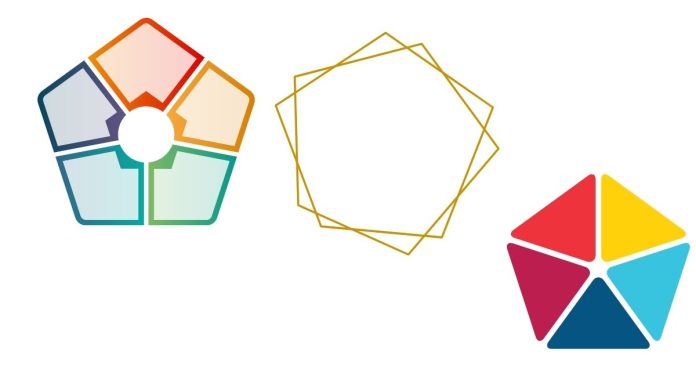A pentagon is a five-sided polygon that plays a significant role in geometry. Understanding the basic properties of a pentagon—its faces, edges, and vertices—is essential for anyone studying shapes and their characteristics. Here is a detailed explanation:
Faces
In geometry, a “face” refers to a flat surface that forms part of a three-dimensional object. However, when dealing with a two-dimensional shape like a pentagon, the term “face” usually describes its single flat surface. Therefore, a pentagon has:
- 1 face
Edges
Edges are the straight lines that connect two adjacent vertices of a polygon. For a pentagon, which has five sides, the edges correspond to these sides. Thus, a pentagon has:
- 5 edges
Vertices
Vertices are the points where two edges meet. In the case of a pentagon, there are five such points. Therefore, a pentagon has:
- 5 vertices
Summary of Pentagon Properties:
- Faces: 1
- Edges: 5
- Vertices: 5
Extension: Regular vs. Irregular Pentagons
A pentagon can be classified as either regular or irregular. In a regular pentagon, all edges are of equal length, and all interior angles are equal, measuring 108 degrees each. In contrast, an irregular pentagon has sides and angles of different measures. However, the number of faces, edges, and vertices remains constant for all pentagons.
Applications
Pentagons can be found in various fields and structures. For example:
- In nature, the symmetry of a regular pentagon is seen in flowers like the morning glory.
- In architecture, pentagonal shapes are often used for aesthetic and structural purposes.
- The pentagon is also a prominent symbol in various cultural and mathematical contexts.
Understanding these fundamental properties allows for deeper exploration into geometry and its applications.



